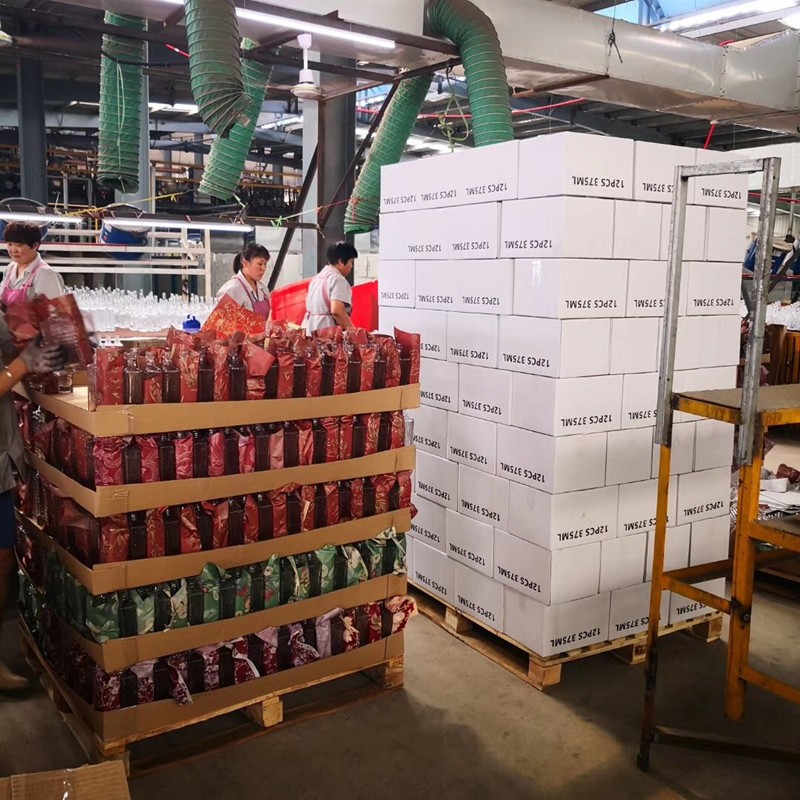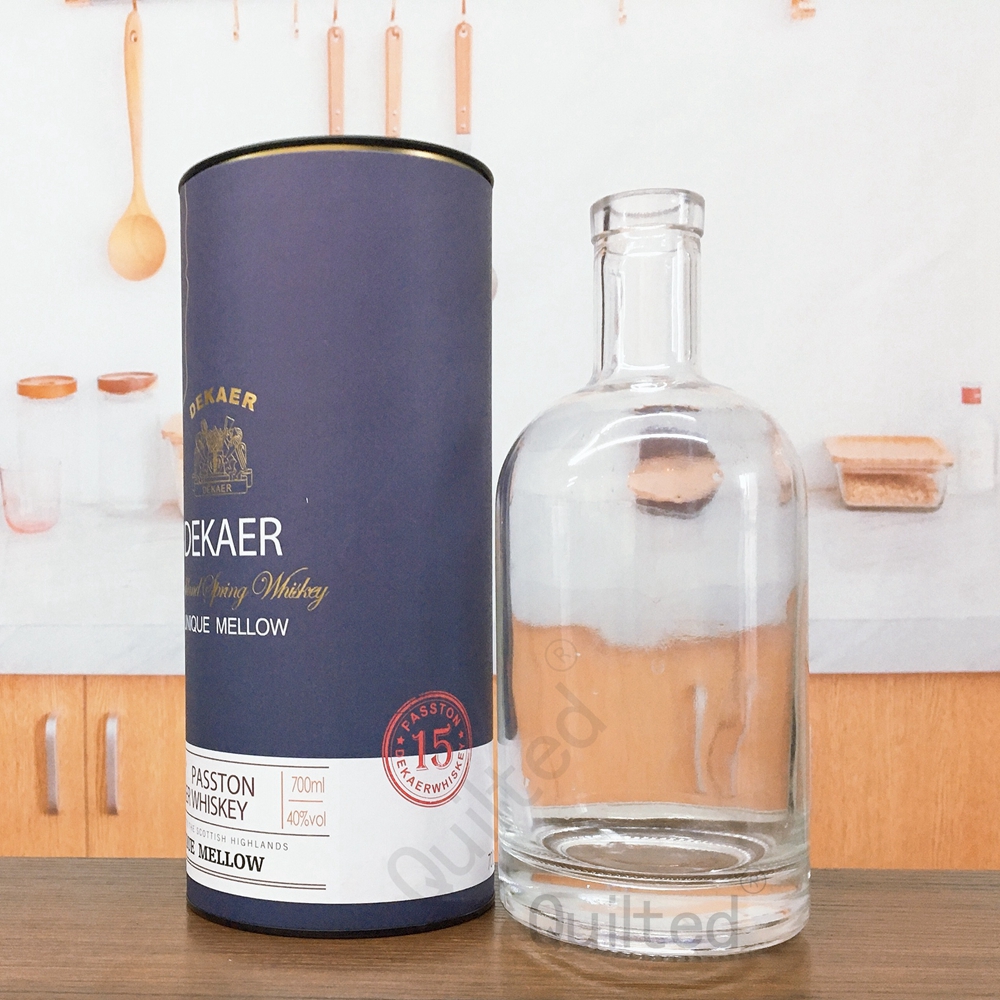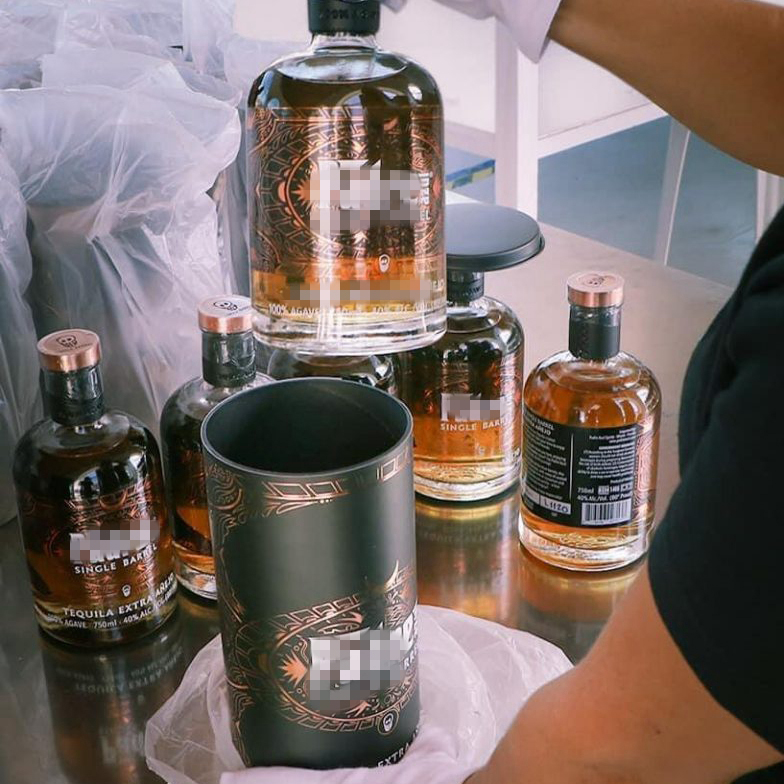At present, except for a few low-end products and individual brands on the market, most brands have their own exclusive packaging design, which is not only conducive to raising product prices, but also to stand out from competing products and create better benefits.
1 The influence of wine packaging materials on wine
1.1 Main types of wine packaging materials
Alcohol packaging mainly includes outer packaging and inner packaging. The types of outer packaging materials include paper, plastic, metal and wood; the types of inner packaging materials include plastic, glass, wood and ceramics; in addition, the wine packaging used in ancient times is also an innovation, and ceramics, jade products and crystal products are also used. Applied to wine packaging.
1.2 The influence of wine packaging materials on wine
Although the outer packaging material of wine is not in direct contact with wine, its influence on wine cannot be ignored.
1.2.1 In the outer packaging, paper is the most important packaging material, and its hidden dangers cannot be ignored. The main reason is that chemicals such as anti-seepage agents, sizing agents, fillers need to be added to the pulp during the papermaking process.
(makes paper opaque), bleach, dyes, etc. The anti-seepage agent is mainly rosin soap; the filler is kaolin, calcium carbonate, titanium dioxide, zinc sulfide, barium sulfate and magnesium silicate; the bleaching agent is calcium hypochlorite, hypochlorous acid, sodium peroxide and hydrogen peroxide, etc.; dyeing agent Use water-soluble dyes and coloring pigments. Most of the dissolved substances in paper come from chemical substances such as pulp additives. Among the dyes, cadmium-based metals are mostly used in red, and lead-based metals are mostly used in yellow, which can also be dissolved in low concentrations (mg/L level) and cause disease. Heavy metals cannot be biodegraded, on the contrary, they can be enriched thousands of times under the bio-magnification of the food chain, and finally enter the human body. Heavy metals can interact strongly with proteins and enzymes in the human body, making them inactive, and may also accumulate in certain organs of the human body, resulting in chronic poisoning. Paper colorants contain toxic fluorescent dyes, wax paper contains residual monomers, and some waxes contain carcinogens. In addition, formaldehyde used in antifungal agents or resin processing can also be dissolved from paper products.
1.2 The influence of wine packaging materials on wine
Although the outer packaging material of wine is not in direct contact with wine, its influence on wine cannot be ignored.
1.2.1 In the outer packaging, paper is the most important packaging material, and its hidden dangers cannot be ignored. The main reason is that chemicals such as anti-seepage agents, sizing agents, fillers need to be added to the pulp during the papermaking process.
(makes paper opaque), bleach, dyes, etc. The anti-seepage agent is mainly rosin soap; the filler is kaolin, calcium carbonate, titanium dioxide, zinc sulfide, barium sulfate and magnesium silicate; the bleaching agent is calcium hypochlorite, hypochlorous acid, sodium peroxide and hydrogen peroxide, etc.; dyeing agent Use water-soluble dyes and coloring pigments. Most of the dissolved substances in paper come from chemical substances such as pulp additives. Among the dyes, cadmium-based metals are mostly used in red, and lead-based metals are mostly used in yellow, which can also be dissolved in low concentrations (mg/L level) and cause disease. Heavy metals cannot be biodegraded, on the contrary, they can be enriched thousands of times under the bio-magnification of the food chain, and finally enter the human body. Heavy metals can interact strongly with proteins and enzymes in the human body, making them inactive, and may also accumulate in certain organs of the human body, resulting in chronic poisoning. Paper colorants contain toxic fluorescent dyes, wax paper contains residual monomers, and some waxes contain carcinogens. In addition, formaldehyde used in antifungal agents or resin processing can also be dissolved from paper products.
2 Conclusion
At present, many countries in the world are studying the use of green packaging and using non-toxic and harmless packaging materials. In international food trade, countries have formulated relevant regulations and standards to protect the health of consumers and ensure that they play an active role in food safety. effect. People rely on food for the sky, and food safety is closely related to every consumer, and food safety has become a focus of attention. With the continuous improvement of people’s living standards and the rapid development of science and technology, people’s focus on food safety is not only limited to the problem of food itself, but also the food safety problems that may be caused by materials and products that come into contact with food have become increasingly popular. One of the things to pay attention to. The most typical times, such as special rich coatings, benzene-based solvents in food packaging bags, and other safety issues have aroused widespread concern and concern from all walks of life.
Among the wine packaging materials, glass wine bottles are used as containers, and their use has been relatively mature. Ceramic wine bottles will deteriorate due to factors such as porosity and water absorption. Bone china has low water absorption and small porosity, and can be used in wine packaging. The plastic products mentioned above have been widely used in wine packaging, but they all have their own advantages and disadvantages, and a composite material that blends two or more polymer materials can make up for the deficiencies in the application of various polymer materials. As a scientific research institution, it should strengthen the research and application of new wine packaging materials, find suitable packaging materials, provide better professional titles for the development of the wine industry, and allow the long-standing wine culture to spread on the land of China.
Post time: 10月-14-2022







